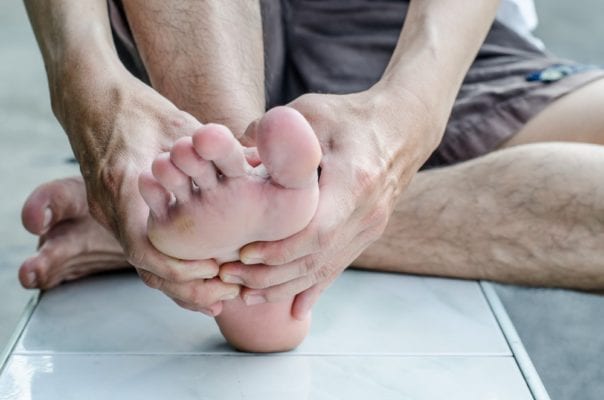
It has been estimated that approximately 3.9 percent of adults in the U.S. are diagnosed with a condition known as gout.1 This condition was once known as a disease of kings because it was associated with overindulgence in food and drink. However, gout diagnoses have been on the rise in this country, and it’s important to understand how and why this is happening.
This article aims to address the important things to know about gout, such as what it is, who it affects, and whether it is considered to be a form of arthritis. It will also cover gout attack triggers and possible treatments for the condition.
Connection Between Gout & Arthritis
Rather than purely an error of overindulgence, gout is a type of inflammatory arthritis.2 There are many other types of inflammatory arthritis as well, such as rheumatoid arthritis, for example. But gout is often first marked by an extreme feeling of pain in the big toe, accompanied by swelling.3
Causes of Gout
Unlike some types of arthritis that have seemingly mysterious causes, the cause of gout is well-established. Gout develops when uric acid in the body forms sharp crystals in a joint.4,5 This phenomenon creates sudden and severe pain accompanied by warmth, swelling, and redness. A diet high in purines can lead to gout, as well as a kidney malfunction that prevents them from getting rid of enough uric acid.6,7
Who Develops Gout?
While gout among American adults is on the rise in general, it is more common for men to develop this condition than women.3 Gout attacks are often brought on by a trigger, such as another illness, drug use, alcohol use, or stress. Gout tends to run in families and is more common among men who drink an excessive amount of alcohol, who are overweight, who have been exposed to environmental lead, or who have had an organ transplant.
Symptoms of Gout
As mentioned above, the first symptom of gout is often pain and swelling of the big toe. However, these symptoms can present themselves in the knee or ankle instead. Fingers, elbows, wrists, and the heels and insteps of the feet may also be affected.
It is common for gout symptoms to go away on their own within a few days.8 However, it is impossible to know when the next attack will strike, as it could be months or years into the future.3 If the long-term symptoms of gout are not treated, long-term joint damage and kidney damage may result.
How to Treat Gout
Gout is typically diagnosed by conducting a blood test and imaging tests. Fluid can be removed from inflamed joints and examined for uric acid crystals. Nonsteroidal anti-inflammatory drugs, corticosteroids, and colchicine are often prescribed to treat acute attacks of gout. To manage the symptoms of pain associated with gout, it may be beneficial to massage an arthritis pain relief cream like JointFlex into the joint site a few times per day as necessary.
But choosing a healthy lifestyle is ultimately the key to keeping gout attacks at bay. It is essential for gout sufferers to avoid purine-rich foods, such as organ meats, game meats, gravy, and beer.9,10 It is also advised to maintain a healthy weight, drink plenty of water, and exercise often. However, weight loss should be approached with caution and under the advisement of a physician because an extreme loss of weight can actually increase uric acid in the blood and trigger gout symptoms.
REFERENCES FOR GOUT CAUSES, SYMPTOMS… AND CONNECTION TO ARTHRITIS
1. Arthritis by the numbers. Arthritis Foundation. Retrieved October 30, 2018 from https://www.arthritis.org/Documents/Sections/About-Arthritis/arthritis-facts-stats-figures.pdf.
2. Gout. Arthritis Foundation. Retrieved October 30, 2018 from https://www.arthritis.org/about-arthritis/types/gout/.
3. Gout. National Institute of Arthritis and Musculoskeletal and Skin Diseases. Retrieved October 30, 2018 from https://www.niams.nih.gov/health-topics/gout#tab-symptoms.
4. Edwards, N. L. (2018 May). Gout. The Merck Manual: Consumer Version. Retrieved October 18, 2018 from https://www.merckmanuals.com/home/bone,-joint,-and-muscle-disorders/gout-and-calcium-pyrophosphate-arthritis/gout.
5. Uric acid – blood. MedlinePlus. Retrieved October 17, 2018 from https://medlineplus.gov/ency/article/003476.htm.
6. Safe foods for gout. Arthritis Foundation. Retrieved October 30, 2018 from https://www.arthritis.org/living-with-arthritis/tools-resources/expert-q-a/gout-questions/food-for-gout.php.
7. Gout and chronic kidney disease. National Kidney Foundation. Retrieved October 30, 2018 from https://www.kidney.org/atoz/content/gout.
8. Foley, C. (2018 September 17). How long does a gout attack last? These three factors determine the answer. University Health News. Retrieved October 30, 2018 from https://universityhealthnews.com/daily/bones-joints/how-long-does-gout-last/.
9. Gout diet: Do’s and don’ts. Arthritis Foundation. Retrieved October 30, 2018 from https://www.arthritis.org/about-arthritis/types/gout/articles/best-and-worst-gout-foods.php.
10. Gout. Centers for Disease Control and Prevention. Retrieved October 19, 2018 from https://www.cdc.gov/arthritis/basics/gout.html.
